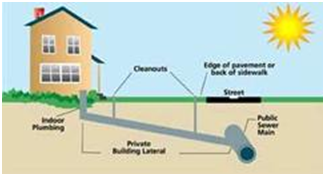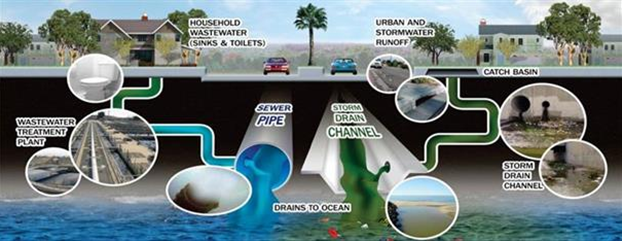HISTORY OF THE CITY OF STANTON
The City of Stanton is located in northwestern Orange County. With a population of more than 39,000 in 3.1 square miles, residents enjoy a small-town community feeling. The City was incorporated in 1956 and has enjoyed growth and prosperity since that time. The City’s motto – Community Pride and Forward Vision identifies Stanton as a place where innovation and pride in the community are an important aspect of life in Stanton. Community excitement comes from the revitalization of commercial and residential areas, and the attraction of major new developments created through an active redevelopment program. Stanton residents enjoy major retail opportunities, active civic volunteers and business-friendly City organizations. Residents benefit from a wide variety of programs provided by the City which include great parks, a family resource center, annual holiday events and programs which support taking pride in ownership.
Modern Stanton can trace its origins to one of the largest land grants made in California – a concession which covered over 300,000 acres of land. Manuel Perez Nieto, the successful petitioner, found his grant reduced approximately one-half following a protest by the padres of Mission San Gabriel. Upon Manuel Nieto’s death in 1804, his son Juan Jose, took title to Rancho Los Coyotes and Rancho Los Alamitos. Following his confirmation of the title to the lands in 1834, then-governor Jose Figueroa proceeded to purchase Rancho Los Alamitos (28,000 acres) from Juan Jose Nieto for $500, or less than 2 cents an acre. He, in turn, sold the Rancho in 1842 to Don Able Stearns for $6,000. Stearns, born in Massachusetts, was one of the first American immigrants to arrive in California in 1829.
WHERE DOES STANTON CITY WATER COME FROM?
Golden State Water has proudly served Los Alamitos and surrounding communities since 1929. We currently serve approximately 27,200 customers in Cypress, Los Alamitos, Stanton and portions of Buena Park, Garden Grove, La Palma, Rossmoor, and Seal Beach.
Water delivered to customers in the West Orange County System is a blend of groundwater pumped from the Orange County Groundwater Basin and imported water from the Colorado River Aqueduct and State Water Project (imported and distributed by Metropolitan Water District of Southern California)
ARE THERE CONTAMINANTS IN STANTON CITY WATER?
The sources of drinking water (both tap water and bottled water) include rivers, lakes, streams, ponds, reservoirs, springs and wells. As water travels over the surface of the land or through the layers of the ground it dissolves naturally-occurring minerals and, in some cases, radioactive material, and can pick up substances resulting from the presence of animal and human activity.
Contaminants that may be present in source water include:
Pesticides and herbicides, which may come from a variety of sources such as agriculture, urban stormwater runoff, and residential uses.
Microbial contaminants, such as viruses and bacteria, which may come from sewage treatment
plants, septic systems, agricultural livestock operations, and wildlife.
Radioactive contaminants, which can be naturally occurring or be the result of oil and gas production or mining activities.
Inorganic contaminants, such as salts and metals, which can be naturally occurring or result from urban storm runoff, industrial or domestic wastewater discharges, oil and gas production, mining and farming.
Organic chemical contaminants, including synthetic and volatile organic chemicals, which are by-products of industrial processes and petroleum production, and can also come from gasoline stations, urban stormwater runoff, agricultural application and septic systems
SHOULD I DRINK AND BATHE WITH STANTON CITY WATER STRAIGHT FROM MY FAUCET?
Some people may be more vulnerable to contaminants in drinking water than the general population. Immuno-compromised people, such as those with cancer who are undergoing chemotherapy, persons who have had organ transplants, people with HIV/AIDS or other immune system disorders, some elderly persons and infants can be particularly at risk from infections. These people should seek advice about drinking water from their health care providers.
The USEPA and the federal Centers for Disease Control guidelines on appropriate means to lessen the risk of infection by Cryptosporidium and other microbial contaminants are available from USEPA’s Safe Drinking Water Hotline at (800) 426-4791 between 10 a.m. and 4 p.m. Eastern Time (7 a.m. to 1 p.m. in California)- source: 2017StantonWater consumer confidence report.
https://www.gswater.com/bellbellgardensCCR/
Complete Plumbing recommends installing a Catalytic Carbon Whole house water filtration system by Aqualistic Water Products to remove most of the harmful chemicals in your city water, leaving you with bottled quality water at every faucet in your home.
STANTON PLUMBING TIPS
Fix leaky faucets. For every leak stopped, you can save 20 gallons of water per day.
Develop a watering schedule for your irrigation system. To learn more, visit www.bewaterwise.com/calculator.html.
Use native plants in your landscaping. Planting and maintaining beautiful California native and water-friendly plants can save between 1,000 and 1,800 gallons per month.
Install a high-efficiency toilet or clothes washer. A temporary rebate program is still available. Other rebates are also available for sprinklers and artificial turf. To learn more, visitwww.ocwatersmart.com.
MWDSC has its own water conservation website. To find out more information on water-saving plants and other useful tips, visit www.bewaterwise.com.
STANTON RESIDENTS should make sure that their plumbing systems are in good working order and are leak-free. This is important, not only for saving money on your water bill and limiting damages to property, but it is our responsibility to provide clean fresh water for future generations.
DID YOU KNOW?
Water Leaks:
- Nationwide, more than 1 trillion gallons of water are lost annually due to household leaks. That’s equal to the annual water use of more than 11 million homes.
- The average household can waste more than 10,000 gallons each year due to correctable leaks. That’s enough to wash 270 loads of laundry!
- Ten percent of homes have leaks that waste 90 gallons or more per day! Common sources include toilets, faucets, showerheads, and landscape irrigation. But you should also consider less obvious sources of leaks: water heaters, ice makers, dishwashers, and filtration systems. Many of these are easily correctable, and fixing them can save about 10 percent on the average water bill.
- Be sure to check your toilet for leaks at least once a year. Put food coloring in the tank. If it seeps into the bowl without flushing, there’s a leak. And if your toilet flapper doesn’t close properly after flushing, replace it.
- Remember, one drip a second adds up to five gallons lost per day!
So regularly check your faucets and showerheads, as well as all hoses and connectors. - Many household leaks can be solved with simple tools and a little education — and fortunately, Do-It-Yourselfers have access to multiple resources. But even if you must pay for repairs, you will still save money in the long run. For more information on water conservation, visit ocwatersmart.com.
- Complete plumbing provides leak detection of even the smallest amount of water which could prevent costly water bills and possible damage due to water leaks
- Complete plumbing utilizes automatic water shut off valves that detect leaks, automatically shuts off the water to your home then sends you an alert via a smartphone app. You can turn the water on and off, monitor water usage and temperature right from your phone!

Sewer Maintenance
The Sewer Division is responsible for the maintenance of the City’s sanitary sewers system. Sanitary Sewers are cleaned regularly, and their condition is continuously monitored. This is crucial to prevent failures and backups. Maintenance activities performed to comply with the City’s National Pollutant Discharge Elimination (NPDES) program, and all environmental regulatory agency requirements.
The City is responsible for maintaining to public sewer mainline in the street. Per the City’s Municipal Code Section 13.04.030, the private homeowner is responsible for the maintenance of the private building lateral, as shown in the image below.
Storm Drain Maintenance
The City utilized both in-house personnel and contractual services to maintain the City’s storm drain facilities. Activities include minor maintenance of the storm drains, curbs and gutters, catch basis, and other drainage structures.

- Most Cypress homes have just one main sewer pipe that connects the sewer system from their house to the city’s main sewer system. Homeowners are required to maintain that sewer pipe up to and including the middle of the street and may be responsible for repair costs should a problem occur.
- Complete Plumbing has the capability to use a sewer drain camera and location device to inspect sewer lines for breaks, cracks root intrusions. This simple examination of your sewer system may save thousands of dollars in repair costs.

Stormwater is water from rain that does not soak into the ground. It flows over paved areas like streets, sidewalks, and parking lots, as well as roofs and sloped lawns. As it flows, the stormwater collects and carries pollutants such as litter, pet waste, pesticides, fertilizers, and motor oil. This “toxic soup” then flows through a massive system of pipes and channels directly into our local waterways and the ocean.
What is the difference between the storm drain system and the sanitary sewer system?
The storm drain system and sanitary sewer system are both large conveyance systems of underground pipes. This leads to the misconception that the systems are one and the same. They are in fact separated and serve different purposes.
The sanitary sewer system transports domestic sewage to a treatment plant. Domestic sewage includes wastewater from household and commercial plumbing, such as toilets, showers, and sinks. There, contaminants are removed from the sewage through a multi-stage process, which includes settling, filtering, and biological and chemical treatment. The treated water is then discharged into local waterways or used as reclaimed water.
The storm drain system, on the other hand, was designed to prevent cities from flooding. Its purpose is to quickly transport rain runoff (stormwater) away from the city and into the nearest waterway, without treatment. And so, any pollution carried by stormwater also enters our waterways untreated.

We have been serving Stanton Residents for over 30 years and know a lot about Stanton water filtration systems, Stanton Plumbing Systems, Stanton heating, and air conditioning systems, Stanton tankless water heaters, Stanton drain cleaning
Call and ask about our Stanton residents specials
READY TO GET STARTED?